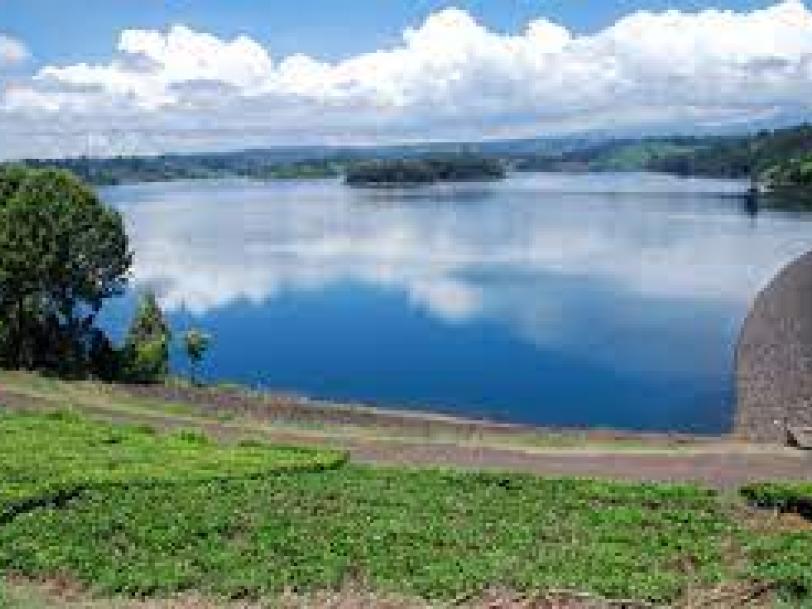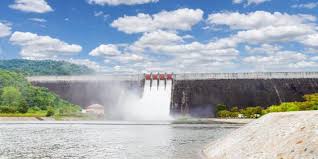
The Sio-Malaba-Malakisi sub-basin with a population of 4 million people is endowed with abundant natural resources which present tremendous potential for social economic development.
The catchment encompasses a wide variety of ecosystems including lakes, rivers, forests, game reserves, and national parks that are home to a rich variety of fauna and flora of high tourism value. Agriculture is the major socio-economic activity in the catchment employing about 85% of the people in the basin. However, poor agricultural practices, exacerbated by inadequate extension services, have resulted in extensive catchment degradation.
Intensive land cultivation up to the riverbanks and indiscriminate sand harvesting of river banks and river beds have caused excessive sediment loads and resulted in water quality degradation. The rivers not only include a complexity of problems related to upstream (Kenya) and downstream (Uganda) conditions, but are also a network of river reaches forming an international border e.g. the Lwakhakha and lower Sio Rivers.
Addressing these challenges therefore calls for judicious joint actions and investments by both Uganda and Kenya to improve the river conditions. The incentives for joint actions like establishment of joint gauging stations, riverbank stabilisation, and exchange of information and promotion of cross border trade are particularly intended for these river reaches.
Improved living conditions through the creation of an enabling environment for sustainable development oriented investments.
The joint management of the Sio-Malaba-Malakisi sub-basin will lead to:
- A coordinated approach to reducing pollution and sediment loads into Lake Kyoga and Lake Victoria.
- Improved cross border trade between water user stakeholder groups and improved cooperation between district authorities
- A greater cooperation between parties involved in water resource planning between Uganda and Kenya.
- Addressing conflicts and cost efficient actions to upstream, downstream and cross border problems.
Components
- Establishment of a sustainable cooperative framework for the joint planning, management and development of the shared water resources.
- Investments opportunities identification, development of a sustainable investment strategy and undertaking pre-feasibility and feasibility studies of some of the identified investment opportunities to attract public and private sector investment and promote economic growth in the Catchments.
- Building sustainable capacity in the sub-basin through establishment of water resources infrastructure, training human resources to enhance skills and increase knowledge.
- Implementation of small-scale investment projects that provides early tangible benefits to the basin communities and promotes confidence in the Nile Basin cooperation.
1. Sustainable Cooperative Management Framework
- Cooperative Framework elaborated including capacity building plan.
- Draft Bilateral Agreement between Kenya and Uganda for management of shared water resources of the Sio-Malaba-Malakisi river basin developed.
- Sub basin institutional arrangement developed and agreed upon.
2. Investment opportunities identification in the catchments
- SMM River Basin Monograph, information database, DSS developed.
- SMM Sub-Basin Investment Strategy developed
- Pre-feasibility studies for the development of multi-purpose water storage reservoirs within the Sio-Malaba-Malakisi river catchments undertaken
- Feasibility study for Maira Small Multipurpose Dam undertaken
- Environmental and Social Impact Assessment & Draft Resettlement Action Plan for Maira Project prepared.
- SMM Integrated Watershed Management Program prepared.
- 17 small multipurpose reservoirs identified in Manafwa Catchment.
- Sio-Siteko Wetland Management Plan prepared.
- Busia Cross Border Pollution Control Project
- Malaba Cross Border Pollution Control Project
- Lwakhakha Cross Border Pollution Control Project
- Bungoma Pollution Control Project
3. Capacity building at all levels for sustainable management of Water Resources
- Sub-basin wide sustainable hydro-meteorological network Rehabilitated
- Capacity Building Plan, Stakeholders’ Participation Plan and Gender Mainstreaming Plan
- Staff trained at national and basin levels and catchments offices strengthened
- Shared Lwakhakha sub catchment management plan prepared
- Sio-Malaba-Malakisi State of Basin Report prepared
- SMM Baseline water quality established
- Community awareness raising about environmental management issues and development options undertaken
- Study tours and exchange visits undertaken to Niger Basin, Loess Plateau in China, Pangani Basin, Komati Basin and Orange-Senqu, Senegal River Basin.
4. Commissioned 5 Small scale investment projects
- Mella Water supply and sanitation Project Tororo district, Uganda
- Angurai Piped Water Supply System, Kenya;
- 7 Community Fish Ponds, Busia, Uganda;
- Malaba Solid Waste Management, Kenya (Tractor Trailer and Dust bins).
- Storm Water Drainage Master Plan for Malaba Town, Uganda developed.

